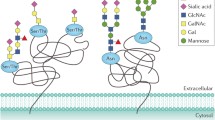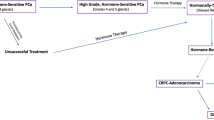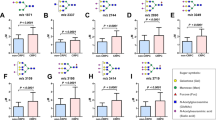Abstract
Prostate-specific antigen (PSA) is an extensively studied glycoprotein with critical biological functions in reproduction and is an important biomarker for detection of prostate cancer. The central role of PSA in both areas has made it one of the most studied human glycoproteins. Structurally, it has a single site of N-glycosylation, making it an attractive target for characterization of the glycans attached to it in relation to disease and function. The methods used and results from the most extensive glycan structural studies are summarized. Cumulatively, these studies have identified a large number of structurally diverse glycans attached to the single glycosylation site of PSA, which has hindered assignment of specific glycan structures to be associated with only prostate cancer or other condition. The primary analytical tools used for these types of studies are high-resolution mass spectrometers. As this technology continues to evolve, and as more samples of PSA from individual patients are analyzed, it is expected that the functions of the numerous N-linked glycan structures present on the single glycosylation site of PSA will emerge.
Access this chapter
Tax calculation will be finalised at checkout
Purchases are for personal use only
Similar content being viewed by others
References
Barry MJ (2009) Screening for prostate cancer – the controversy that refuses to die. N Engl J Med 360:1351–1354
Kim Y, Ignatchenko V, Yao C et al (2012) Identification of differentially expressed proteins in direct expressed prostatic secretions of men with organ-confined versus extracapsular prostate cancer. Mol Cell Proteomics 11:1870–1874
Leymarie N, Griffin PJ, Jonscher K et al (2013) Interlaboratory study on differential analysis of protein glycosylation by mass spectrometry: the ABRF glycoprotein research multi-institutional study 2012. Mol Cell Proteomics 12:2935–2951
Lovgren J, Valtonen-Andre C, Marsal K et al (1999) Measurement of prostate-specific antigen and human glandular kallikrein 2 in different body fluids. J Androl 20:348–355
Makarov DV, Carter HB (2006) The discovery of prostate specific antigen as a biomarker for the early detection of adenocarcinoma of the prostate. J Urol 176:2383–2385
Nyalwidhe JO, Betesh LR, Powers TW et al (2013) Increased bisecting N-acetylglucosamine and decreased branched chain glycans of N-linked glycoproteins in expressed prostatic secretions associated with prostate cancer progression. Proteomics Clin App 7:677–689
Okada T, Sato Y, Kobayashi N et al (2001) Structural characteristics of the N-glycans of two isoforms of prostate-specific antigens purified from human seminal fluid. Biochim Biophys Acta 1525:149–160
Peracaula R, Tabares G, Royle L et al (2013) Altered glycosylation pattern allows the distinction between prostate-specific antigen (PSA) from normal and tumor origins. Glycobiology 13:457–470
Prakash S, Robbins PW (2000) Glycoty** of prostate specific antigen. Glycobiology 10:173–176
Principe S, Jones EE, Kim Y et al (2013) In-depth proteomic analyses of exosomes isolated from expressed prostatic secretions in urine. Proteomics 13:1667–1671
Stura EA, Muller BH, Bossus M et al (2011) Crystal structure of human prostate-specific antigen in a sandwich antibody complex. J Mol Biol 414:530–544
Tajiri M, Ohyama C, Wada Y (2008) Oligosaccharide profiles of the prostate specific antigen in free and complexed forms from the prostate cancer patient serum and in seminal plasma: a glycopeptide approach. Glycobiology 18:2–8
Takayama TK, Fujikawa K, Davie EW (1997) Characterization of the precursor of prostate specific antigen. Activation by trypsin and by human glandular kallikrein. J Biol Chem 272:21582–21588
White KY, Rodemich L, Nyalwidhe JO et al (2009) Glycomic characterization of prostate-specific antigen and prostatic acid phosphatase in prostate cancer and benign disease seminal plasma fluids. J Proteom Res 8:620–630
Author information
Authors and Affiliations
Corresponding author
Editor information
Editors and Affiliations
Rights and permissions
Copyright information
© 2015 Springer Japan
About this entry
Cite this entry
Drake, R.R. (2015). Enigma of Multiple N-Linked Glycoforms of Prostate Specific Antigen. In: Taniguchi, N., Endo, T., Hart, G., Seeberger, P., Wong, CH. (eds) Glycoscience: Biology and Medicine. Springer, Tokyo. https://doi.org/10.1007/978-4-431-54841-6_187
Download citation
DOI: https://doi.org/10.1007/978-4-431-54841-6_187
Received:
Accepted:
Published:
Publisher Name: Springer, Tokyo
Print ISBN: 978-4-431-54840-9
Online ISBN: 978-4-431-54841-6
eBook Packages: Biomedical and Life SciencesReference Module Biomedical and Life Sciences




